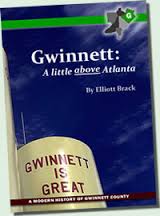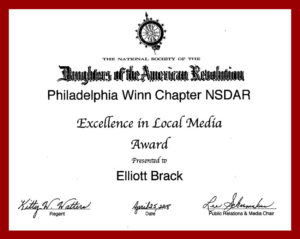By Elliott Brack
Editor and Publisher, GwinnettForum
JAN. 31, 2023 | Since Duluth was founded in 1876, year after year locomotives of the Southern Railway (today Norfolk-Southern) have been sounding their horns for safety at the crossings in the city, with the horns sometimes awakening newcomer residents. However, those sleeping in Duluth may be spared the blaring horns, as the City of Duluth is undertaking to establish a “Quiet Zone” at the crossings.
![]() f all goes as planned, Duluth could be quiet from train horns as early as mid-2024, depending on how long it takes to build a new crossing, and equipment arrival.
f all goes as planned, Duluth could be quiet from train horns as early as mid-2024, depending on how long it takes to build a new crossing, and equipment arrival.
Under the Train Horn Rule locomotive engineers must begin to sound train horns at least 15 seconds, and no more than 20 seconds, in advance of all public grade crossings.
Duluth maintains three railroad crossings, all within a half mile of each other. That gives the railroad engineers plenty of tooting time as they go through the city. The daytime horn signals are not the problem, as trains pass with people being used to them during the day.
However in recent years, Duluth, along with two other local railroad towns, Suwanee and Norcross, has seen a proliferation of new housing units near the central downtowns, with many of the new residents complaining about the horns. (Somehow, many new homeowners apparently did not recognize that all three cities are bisected by the railroad tracks, and that horns, especially at night, would awaken them.)
Duluth’s crossings are at Brock Road, at Georgia Highway 120, and at South Peachtree Street.
Margie Pozin, Duluth city engineer, says that the city is working closely with the railroad to eliminate the South Peachtree Street crossing. Then it will make Davenport Road a crossing. From downtown, Main Street traffic southbound will continue two more blocks past South Peachtree St. to Davenport Road, to gain the new crossing. A full traffic signal will be at Davenport Road and Buford Highway.
She says: “The city has been discussing this for 15 years. As housing developed in the downtown area, the city wanted to make a quiet rail zone for our citizens. We are working with the Federal Railroad Administration and the railroad so we can have Quiet Zone safety in the crossings.”
But Ms. Pozin adds: “This doesn’t mean the rail engineer won’t blow his horn if he sees an emergency ahead.”
The city is contracting with Norfolk-Southern to do work at all three intersections. The contract with Norfolk-Southern for the Davenport Road crossing alone is $1.5 million. The new intersection and the other two crossings must have a full complement of fail-safe elements, including safety gates, street markings, flashing light and circuitry to trigger all the equipment. The railroad is responsible for the design of the crossings and equipment, with all this paid by the city.
The total cost may approach $3 million. That could be reduced significantly, by $750,000, if the current traffic signals and gates at the Georgia Highway 120 crossing are considered adequate by the railroad. This crossing may keep its two gates, if the railroad feels the equipment is sufficient. The raised road medians at this crossing could nullify the need for quad gates.
The Brock Road crossing will have four gates, two on each side of the tracks.
Another rail crossing, for the Southeastern Rail Museum, is a private crossing and not maintained by the city. Trains will still have to blow their horns for this crossing.
Meanwhile, city officials in Norcross have been in talks with Duluth to understand what is happening at Duluth’s crossing.
So be patient, downtown Duluth residents: your rail crossing could be mighty quiet eventually.
- Have a comment? Send to: elliott@brack.net









Follow Us